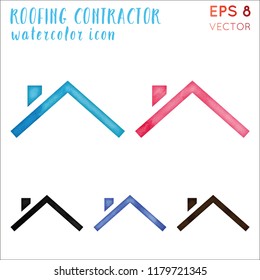Enhancing Compact Locations: Paint Strategies To Foster A Sense Of Area
Enhancing Compact Locations: Paint Strategies To Foster A Sense Of Area
Blog Article
Short Article Writer-
In the realm of interior decoration, the art of taking full advantage of small spaces via strategic paint strategies offers a profound possibility to change cramped locations into aesthetically large sanctuaries. The mindful choice of light shade palettes and creative use visual fallacies can function wonders in developing the illusion of room where there seems to be none. By employing these strategies carefully, one can craft an atmosphere that opposes its physical borders, welcoming a feeling of airiness and openness that conceals its real dimensions.
Light Color Selection
Selecting light colors for your paint can substantially enhance the illusion of room within your art work. Light shades such as soft pastels, whites, and light grays have the capability to show more light, making an area feel more open and ventilated. These shades develop a sense of expansiveness, making wall surfaces show up to recede and ceilings appear higher.
By using light shades on both wall surfaces and ceilings, you can blur the limits of the area, giving the impression of a bigger location.
Additionally, light shades have the power to bounce all-natural and synthetic light around the space, lightening up dark corners and casting less darkness. arrowhead painting in portland adds to the overall roomy feel but likewise creates a more inviting and dynamic atmosphere.
When choosing relevant webpage , consider the undertones to make certain consistency with various other elements in the space. By tactically integrating light shades right into your painting, you can transform a confined space right into an aesthetically larger and more inviting atmosphere.
Strategic Trim Paint
When aiming to produce the impression of room in your paint, tactical trim painting plays an important role in specifying boundaries and enhancing deepness understanding. By tactically picking the shades and coatings for trim job, you can effectively manipulate just how light communicates with the area, ultimately affecting exactly how huge or small a room really feels.
To make an area appear larger, take into consideration painting the trim a lighter color than the walls. This comparison develops a sense of deepness, making the wall surfaces decline and the room really feel more large.
On https://independent-painters-near43097.bloggactivo.com/29627617/inside-paint-vs-exterior-paint-essential-distinctions-and-appropriate-applications , painting the trim the very same shade as the walls can develop a seamless look that blurs the edges, providing the illusion of a constant surface area and making the borders of the area less specified.
In addition, using a high-gloss surface on trim can mirror much more light, further improving the understanding of room. Alternatively, a matte finish can take in light, developing a cozier ambience.
Carefully taking into consideration these information when repainting trim can substantially influence the general feel and regarded size of an area.
Optical Illusion Techniques
Using optical illusion methods in painting can efficiently change perceptions of deepness and area within an offered atmosphere. One usual strategy is the use of gradients, where colors change from light to dark tones. By using a lighter shade at the top of a wall surface and gradually dimming it towards all-time low, the ceiling can appear higher, creating a feeling of vertical space. On the other hand, painting the floor a darker color than the walls can make it look like the space expands better than it actually does.
One more optical illusion technique includes the strategic positioning of patterns. Horizontal red stripes, for instance, can aesthetically widen a narrow area, while upright red stripes can extend a room. Geometric patterns or murals with point of view can likewise deceive the eye right into perceiving even more deepness.
Furthermore, incorporating reflective surfaces like mirrors or metal paints can bounce light around the room, making it really feel much more open and large. By masterfully employing these visual fallacy strategies, painters can change tiny spaces into visually large areas.
Conclusion
In conclusion, tactical paint strategies can be made use of to make best use of little areas and produce the impression of a larger and more open location.
By selecting light shades for walls and ceilings, using lighter trim colors, and incorporating visual fallacy strategies, understandings of deepness and dimension can be adjusted to transform a small area right into an aesthetically bigger and extra inviting environment.
